With the once tightly-closed China social ecosystem continuing to open, it’s possible to direct traffic between different social channels. However, PIPL is strict and the stakes for violating personal information are high. In addition to social channels’ universal mentality of keeping traffic within the platform’s own territory, tracking and measuring are not easy, but not impossible. Generally, you have two weapons at your disposal: Link shorteners and link tagging.
URL links can be long and complex. Link shorteners can help create a unique and shorter link that redirects to the original link. It’s more presentable and easier to share.
During an online campaign, you could have 5 different social networks directing traffic to your website, or one of your social networks is receiving traffic from other networks and websites. In the most complicated scenario, traffic even comes from multiple places in one social channel …
Each traffic channel has its unique URL. Link Tagging can help differentiate them by adding tracking parameters to each link, which can be set manually by your team. You can gain insights into traffic and conversion and understand user behavior on each channel better.
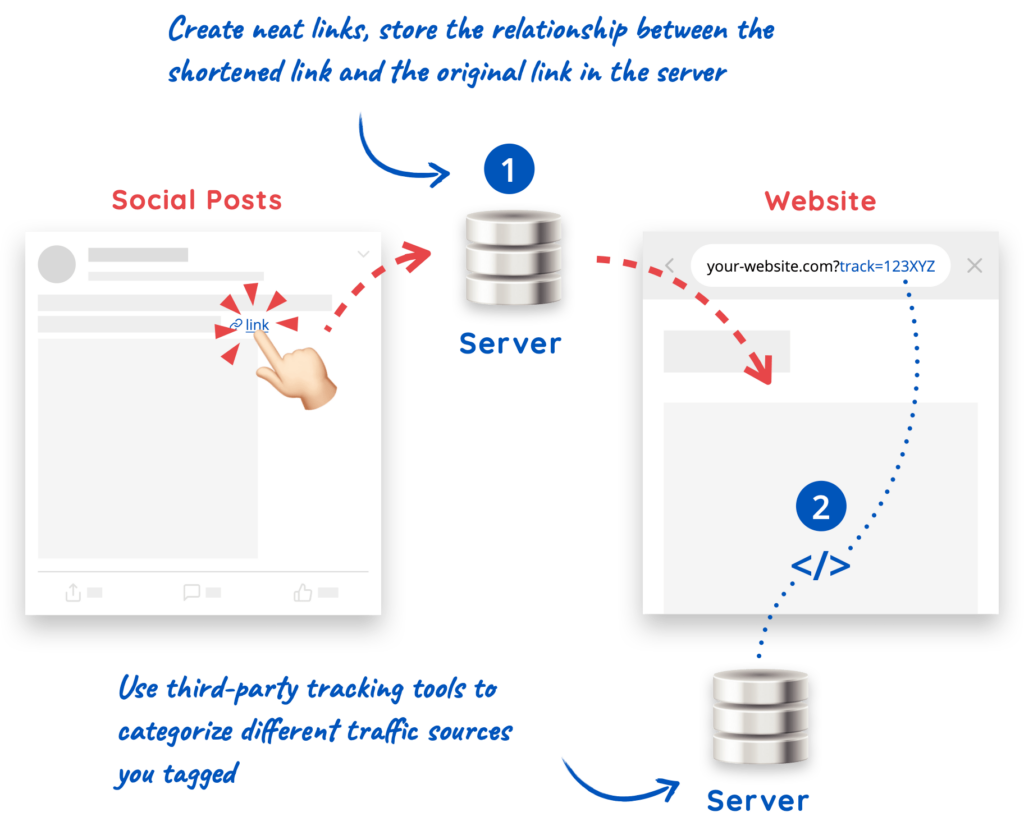
Link Tracking: Each shortened link is unique and you can track the source of the clicks, but not with the accuracy that link tagging provides. In fact, URL shorteners will even rely on link tags in many cases.
URL / Link Shorteners
As specified in the name, a link shortener is essentially turning a long link short. It became popular after the rise of social media in the early 2010s as it takes up less space in content, and is especially handy with platforms that have character limitations. Now the settings for most social platforms tolerant more lengthy content, but being neat and easy to consume remains crucial for retaining the audience’s attention. Additionally, there are a few aspects worth noticing:
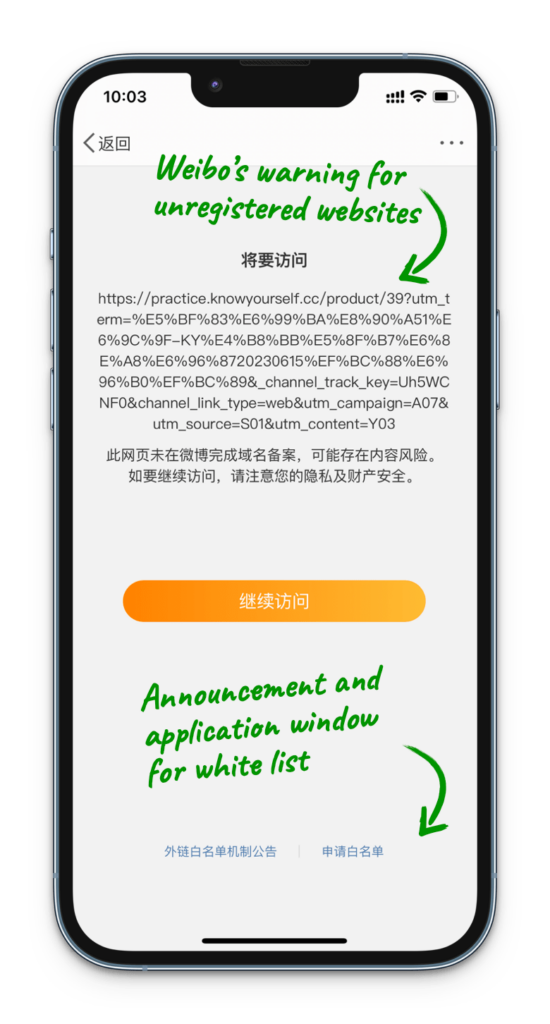
Link masking:
Make the link recognizable and memorable
You can make your brand name or the name of the specific campaign / promotion appear as part of the characters in the link
Leave room for unethical behaviors to fester
Link shorteners can make the original link hard to detect by the platform. Risky links such as fraud and viruses can hide behind a harmless front and wreak havoc. In 2020, Weibo regulated that all instant links which redirect outside of the platform have to be registered in an effort to improve trustworthiness.
Never track traffic at the expense of user experience
The goal of tracking traffic resources and customer journey is to understand audience better, thus increasing the value you bring. Easy access to content should always be the priority. Any inconvenience or confusion while accessing content should be minimized.
Ideally, there should be only one click away to any content, but the more detailed information marketers want to acquire from the audience, the more middle steps there could be. It’s important to find the balance while setting the tracking method.
Free URL shorteners to use in China
Note: Most providers offer different types of links suitable for different platforms and apps including mini programs and e-commerce. Each link comes with an unique QR code as well.
For link traffic analytics, additional charges may apply.
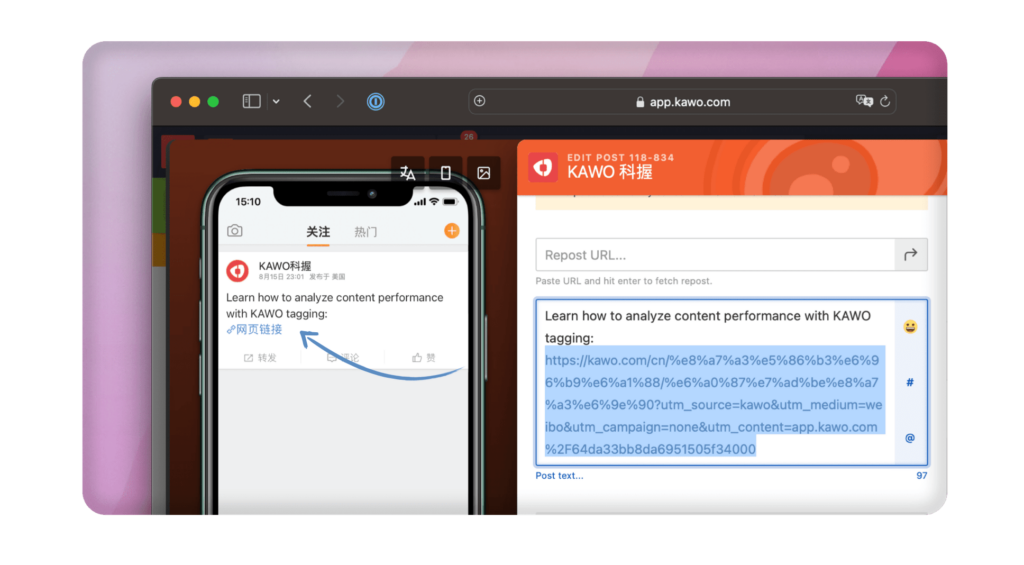
KAWO backend can help turn your long URLs into shorter links automatically, Request a Demo to Learn More…
Link Tagging
Link tagging can add tracking parameters to each URL. Every time your audience visits the link, the set parameters will be sent to a third-party analytics tool where you can see distinguished traffic reports.
1. UTM Link Tagging
The synonym for link tagging is UTM, the universal method for traffic tracking, compatible with most tools on the market. How does it work?
Let’s say a beauty brand has a summer promotion and collaborates with a red influencer on lipstick XO. Here’s the link to the website:
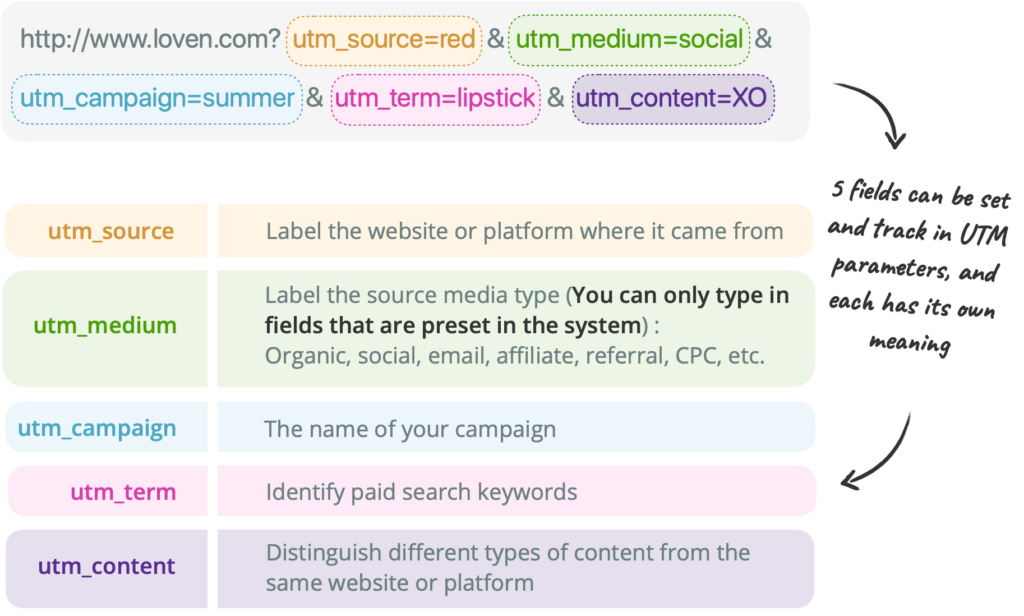
Track UTM link tagging with “Google Analytics”
UTM (Urchin Tracking Module) is the very first system for tracking parameters which was later adopted by Google. Google created the prototype of GA (Google Analytics) based on Urchin, the company created UTM after its acquisition. Now GA is the universal tool for UTM tracking.
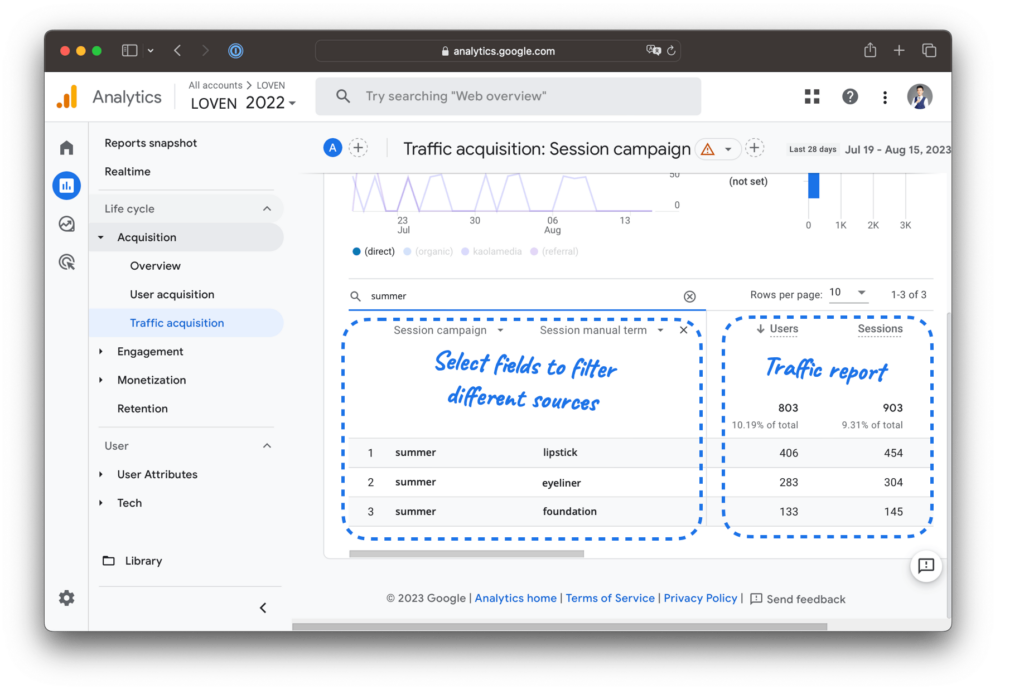
Google Analytics traffic report
Tips for building UTMs:
1. Use free link builders to autogenerate UTM codes (click here) , avoiding manual mistakes;
2. Fields in capital and lower-case will be attributed to different categories;
3. utm_source, utm_medium and utm_campaign are mandatory fields. If any of them are missing or the medium fields have been input with non-preset words, it will result in a misclassification in the traffic reports.
2. Baidu, Alibaba universe and Bilibili link tracking module
Some products have their own tracking systems, but the functions and underlining logic remains the same.

BA (Baidu Analytics):The Domestic Chinese Solution
The Chinese version of GA designed for China’s biggest search engine: Baidu, is not only compatible with UTM, but also has a unique tracking module “hm”, with fields in one-to-one correspondence to those of UTM.
| Google UTM | Baidu “hm” |
| utm_source | hmsr |
| utm_medium | hmpl |
| utm_campaign | hmcu |
| utm_term | hmkw |
| utm_content | hmci |
Note: when “hm” and UTM exist simultaneously inside a link, BA will prioritize the former.
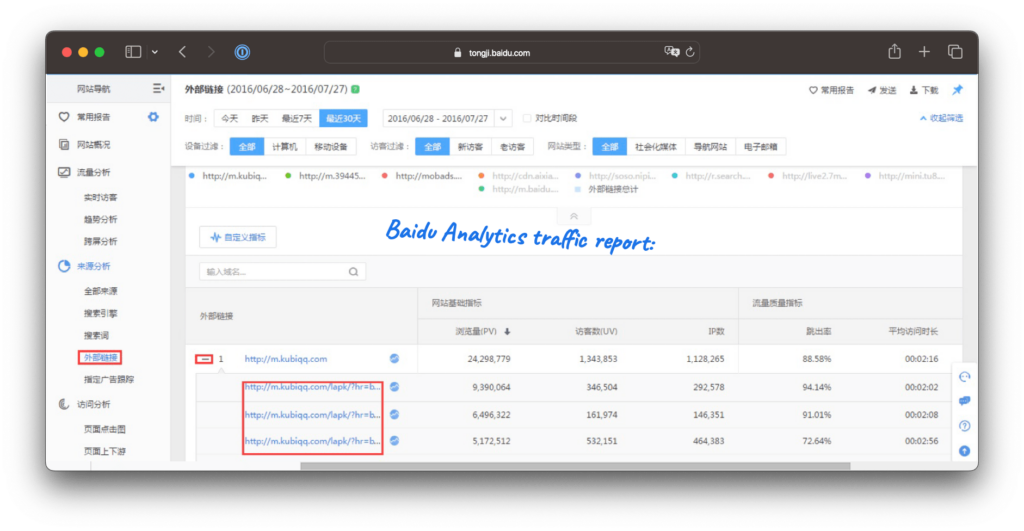
Baidu Analytics (Baidu Tongji) traffic report
SPM link tracking module for Alibaba Universe and Bilibili
SPM (Super Position Model) is often used in e-commerce and video platforms:

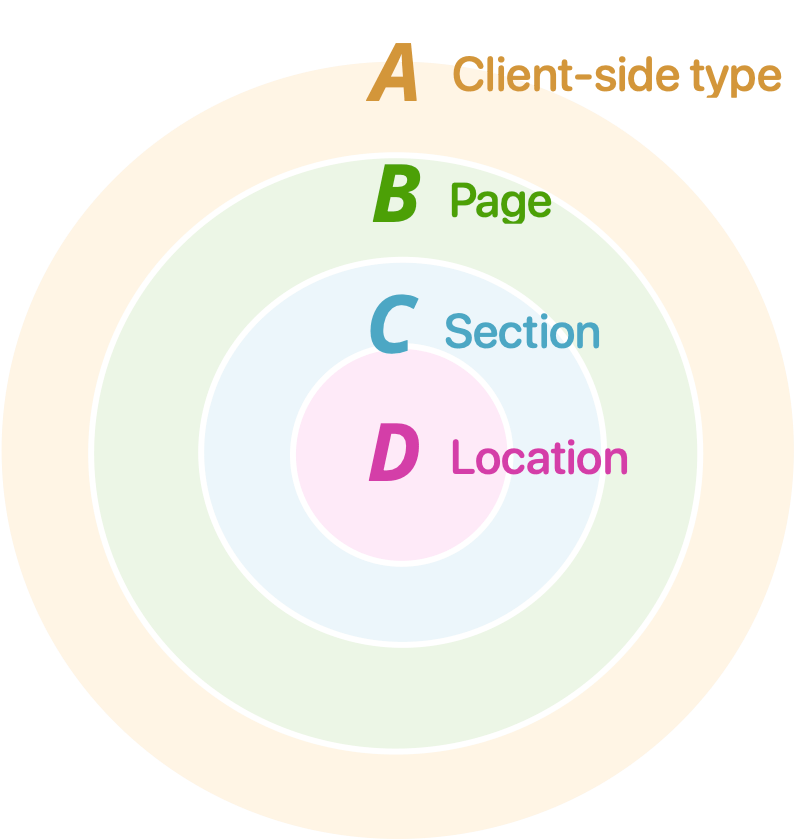
A represents “client-side type” (Taobao App, Taobao PC, Alipay App, etc) Each can be set as unique parameter
B represents the specific page on the client-side (homepage, cartpage, search bar, etc);
C represents the specific section on the page B (coupon channel, trial channel, etc);
D represents the specific location in section C (specific coupon, product, etc).
*Above is the standard setting. The parameters can be set according to different interface structures of the platform.
When Can One Use Which Method to Track Clicks?
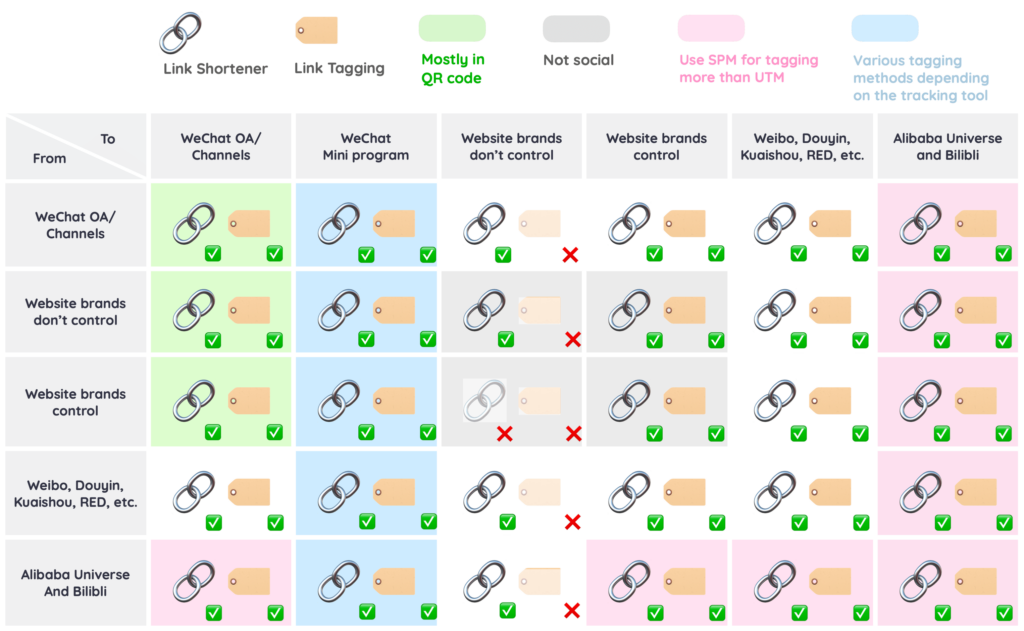
If you are interested in more detailed breakdown of metrics and our first-hand interviews with marketers and professionals, feel free to download KAWO’s Guide to China Social Metrics to learn more.







